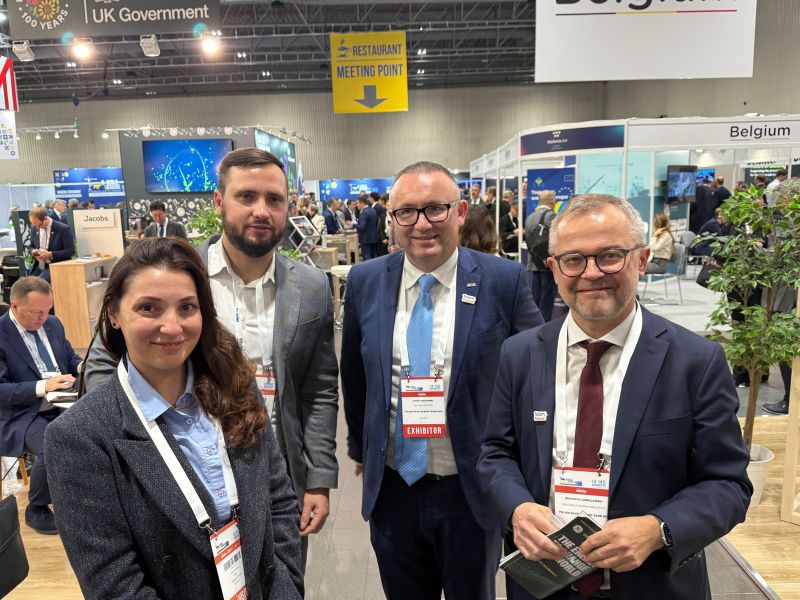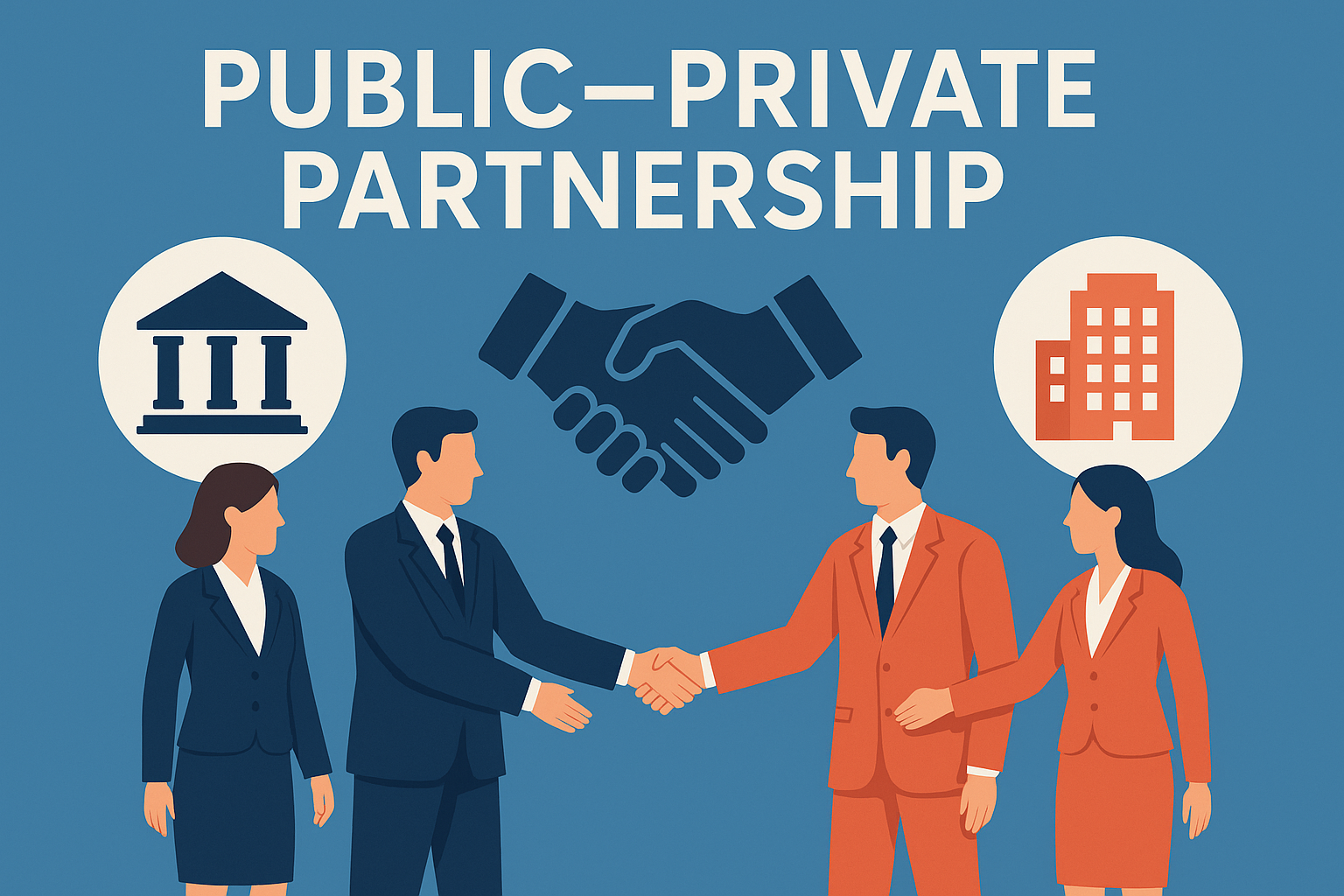Public-private partnership: new law — new opportunities for investors
The document was a response to the urgent needs of post-war reconstruction and integration of Ukrainian legislation into the European legal field. The Law defines the current rules of cooperation between the state, local communities, and businesses in the implementation of large-scale projects, which is especially important in the context of budgetary constraints and the need to attract private investment.
Читати на FacebookOn October 31, 2025, the Law of Ukraine «On Public-Private Partnership» (PPP) No. 4510-IX (hereinafter — the Law of Ukraine) will come into force. It should be noted that not all provisions of the Law will come into force at the same time, and some of them will be implemented gradually.
The document was a response to the urgent needs of post-war reconstruction and integration of Ukrainian legislation into the European legal field. The Law defines the current rules of cooperation between the state, local communities, and businesses in the implementation of large-scale projects, which is especially important in the context of budgetary constraints and the need to attract private investment.
The law comprehensively codifies approaches to PPPs (including outside the scope of concessions), harmonizes procedures for selecting private partners and concluding contracts, and clearly distinguishes between PPPs and public procurement — the Law of Ukraine «On Public Procurement» does not apply to procedures for selecting private partners.
New features and key changes:
Clear unification of terminology (in particular, «grant for PPP», «operational readiness fee», «ancillary property»).
Separation of PPP contracts from public procurement, which avoids duplication of procedures and makes partnerships more flexible.
Introduction of the concept of «sub-threshold projects» (worth < €5.538 million), which have a simplified initiation and preparation procedure.
Consolidation of the principles of sustainable development and mandatory compliance of PPP projects with the United Nations Sustainable Development Goals and the UNECE PIERS assessment system.
Expansion of areas of application: from transport and energy to social housing, healthcare, tourism, and digital infrastructure (Article 4 of the Law of Ukraine).
Key provisions:
Entities: public partners (the state, communities, public sector business entities) and private partners (legal entities of Ukraine or the European Union (EU) created specifically for the project).
Forms: concession agreement or other PPP agreement (mixed forms are also permitted).
Objects: existing and/or newly created objects (infrastructure, housing and social facilities, IT solutions, transport, energy, movable newly created objects, etc.).
Dispute resolution: disputes under PPP agreements are resolved through negotiations or procedures specified in the agreement (mediation, expert examination, arbitration, including abroad, if the private partner has foreign investments). at the request of the private partner or creditor, the public partner, in agreement with the Cabinet of Ministers of Ukraine, may waive sovereign immunity for the enforcement of court and arbitration decisions.
Sources of funding: private funds, loans, state budget, local budgets, grants from international donors, other sources not prohibited by law.
Created property: the general rule applies – everything that is created/acquired «for» the PPP object belongs to the public partner (or state/municipal enterprise or public sector economic entity). At the same time, «ancillary property» (e.g., office or warehouse space for the private partner's needs), if not classified as a PPP object, may be privately owned by the private partner, which facilitates bank financing.
Return. PPP objects are subject to return to the public partner by the last day of the PPP term (with exceptions for housing). It is possible to transfer 100% of corporate rights in a private partnership as a form of return.
Land issues: land plots are provided to the private partner for use/lease for the term of the PPP, or development is carried out under a contract for the delegation of customer functions (for linear facilities). The public partner may initiate the formation of plots. Upon termination of the contract, the right to use the «project» plot is automatically terminated.
Competitive procedures used:
restricted tenders;
open tenders;
competitive dialogue.
Dispute resolution:
disputes under PPP agreements are resolved through negotiations or procedures specified in the agreement (mediation, expert examination, arbitration, including abroad, if the private partner has foreign investments);
At the request of the private partner or creditor, the public partner, in agreement with the Cabinet of Ministers of Ukraine, may waive sovereign immunity for the enforcement of court and arbitration decisions.
How is participation in a PPP beneficial for a private partner?
The law explicitly states that the source of income for a private partner is payments made to support the implementation of the PPP (Articles 5 and 43 of the Law of Ukraine). These payments are generated in several ways.
Payments from the public partner (state, community):
this may be a fee for the operational readiness of a facility after it is put into operation (e.g., roads or hospitals). The amount depends on the achievement of performance indicators: quality, accessibility, reliability;
possible co-financing of part of the private partner's expenses from the budget or international funds.
Revenue from users:
depending on the type of project, a private partner may receive payments from the public or businesses for using the facility (e.g., water, electricity, and transportation service fees). The law explicitly states that revenue may depend on the demand for socially significant services or the level of use of the PPP facility.
Additional sources:
-the right of a private partner to lease part of the property included in the PPP facility or to create and operate ancillary property (e.g., parking lots, cafes, office space) for commercial gain.
Financial incentives:
- grants from international organizations (non-repayable) and tax breaks that sometimes accompany PPPs;
- the possibility of including a projected level of profitability in the contract (the internal rate of return is taken into account when determining the term of the PPP).

Conclusions and recommendations
Law № 4510-IX creates a modern framework for PPPs in Ukraine, similar to EU practices. It is a tool for rebuilding and modernizing infrastructure, but it needs to be properly implemented.
For businesses, the law opens up: access to infrastructure projects on a transparent competitive basis, the opportunity to receive income from operational readiness or facility usage fees, and additional guarantees from the state and donors.
For public authorities: a mechanism for attracting private capital without increasing the debt burden, a tool for implementing social and infrastructure projects in a short time frame, and compliance with European partnership standards.
Therefore, it is the implementation of the Law that will determine whether it will indeed become an effective legal instrument for attracting investment and implementing projects for the reconstruction of Ukraine. Therefore, it is important for all potential parties to these legal relations to understand the regulations it introduces, as well as:
🔸 investors — carefully assess the mechanisms for protecting their interests in contracts and take into account the requirements of sustainable development;
🔸 developers — prepare for higher standards of transparency and competition;
🔸 local authorities — develop institutional capacity to work with PPPs.
Olena Shtohryn, attorney at law, mediator
Founder and managing partner of Dictio











